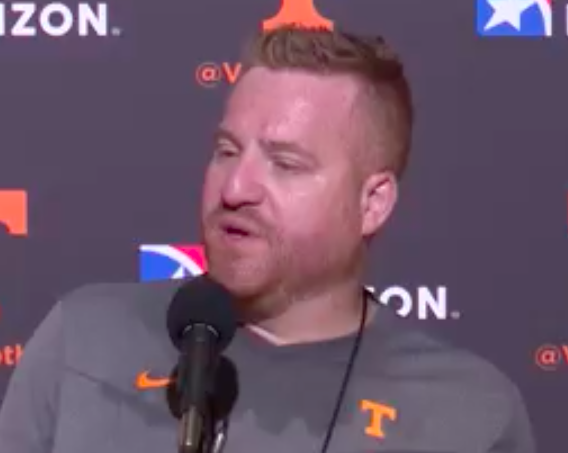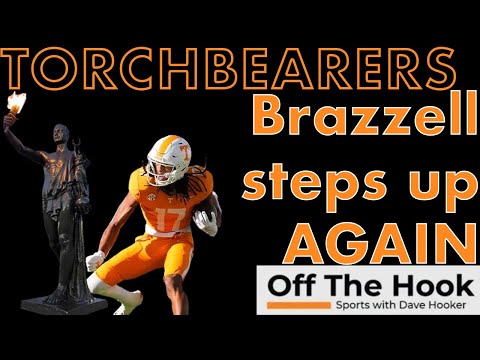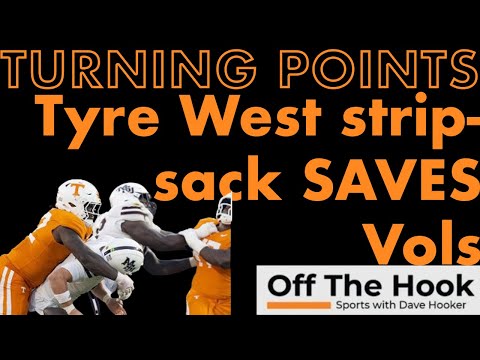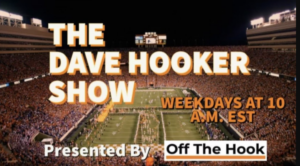By Caleb Calhoun
When it comes to receivers and running backs, the trick is finding a healthy balance between key players you can rely on and enough depth to not have to worry about injury. Tennessee has had issues on both fronts in the past.
Last year, the Vols had a set rotation at receiver with Cedric Tillman as their go-to guy, Velus Jones Jr. as their slot receiver and Javonta Payton lining up on the other side. However, even with Jones and Payton gone, UT offensive coordinator Alex Golesh hints he wants to go deeper this year.
“I feel like we’re two-deep, two-and-a-half-deep there, which a year ago, I felt like we started that way and then I did not feel that way after we started conference play,” Golesh said in a press conference on Tuesday. “So the hope is that we can be at eight guys that can roll through, that can keep us fresh so we could play as fast as we possibly can.”
Any time you hear of a coach going eight-deep at receiver, your ears should perk up. Sure, depth is a good thing, but is it worth sacrificing a set rotation? A common criticism of Butch Jones was that he often tried to run such a deep rotation in certain spots that nobody was able to get into a rhythm.
All you have to do is go back to 2005. The Vols couldn’t find a go-to target among Robert Meachem, Jayson Swain, C.J. Fayton, Chris Hannon and Bret Smith. Their offense was historically bad.
A year later, after Hannon and Fayton graduated, David Cutcliffe shortened the rotation with Meachem as his go-to target, Swain on the other side and Smith in the slot. The result was Erik Ainge setting a single-season completion percentage record and Meachem setting the single-season receiving yards record at UT, the latter of which still stands.
That may not be what Golesh means here. He may just be talking about having eight guys who could rotate in and out but focusing on three or four. Of course, a lot of this depends on USC transfer receiver Bru McCoy’s eligibility.
If you look at how he described other positions, though, the idea was similar. Despite Len’Neth Whitehead’s season-ending injury and Lyn-J Dixon no longer being with the program, Golesh appears to want to go four-deep at running back. We know about Jabari Small, and Jaylen Wright is getting healthy. However, Golesh specifically touted Dylan Sampson, even above his fellow freshman teammate and more highly touted recruit, Justin Williams-Thomas. It seems obvious he’s committed to getting Sampson onto the field as well.
“He’s a natural running back,” Golesh said of Sampson. “He’s not big, but he’s as fast as any back in this league is going to be, so our job with him is going to be to get him in space and let him go hit home runs at whatever point that allows us to happen.”
Golesh also talked about Williams-Thomas, and he even mentioned walk-on Patrick Wilk as other players who could see action. Again, wanting depth at back is good, but you still want your clear starters.
Travis Henry and Travis Stephens were able to step in when Jamal Lewis went down in 1998, but Lewis was the clear-cut ball carrier before that. Stephens then took a redshirt in 1999 when Lewis returned since Lewis and Henry would be the primary ball-carriers. Although the running back position has evolved since then, having set, key ball-carriers is still crucial. Golesh, however, seems to want a deep rotation at receiver and running back. Would that really be beneficial given the talent?
Obviously Tillman is the go-to receiver. Sacrificing his touches for more depth may not seem like the most productive strategy. The same is true with Small and Wright at running back.
Assuming everybody is healthy, Golesh and the Vols would probably have Tillman, Jalin Hyatt and McCoy or Ramel Keyton as their starters at receiver. Small and Wright would be their running backs.
How many other players he uses throughout the year remains a question. It’s fair to say they may have to increase their number of weapons as they use more of their playbook and up their tempo. Golesh did hint at doing that this offseason.
“We’ve got to continue to expand formationally, whether it’s motions or disguising pictures offensively,” he said. “We’ve continued to grow. We’re drastically different today than we were two years ago leaving the previous place.”
Perhaps doing that requires using more bodies. However, the Vols are typically at their best when they have clear weapons in the skill spots. That’s something they shouldn’t lose this year.










